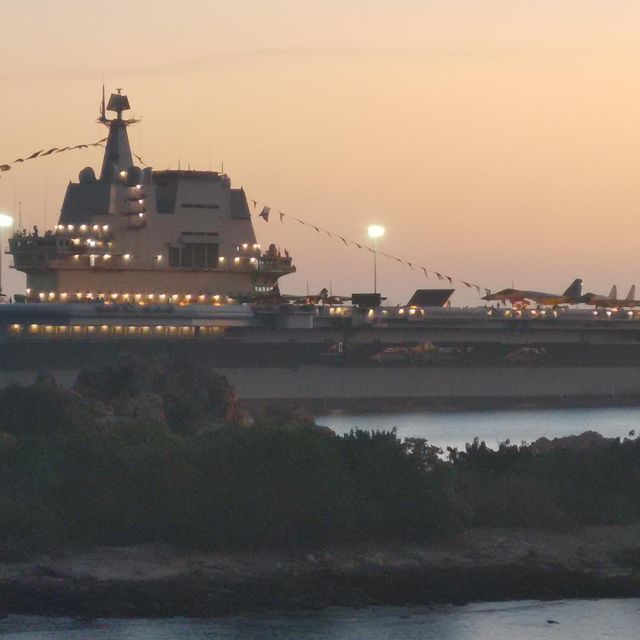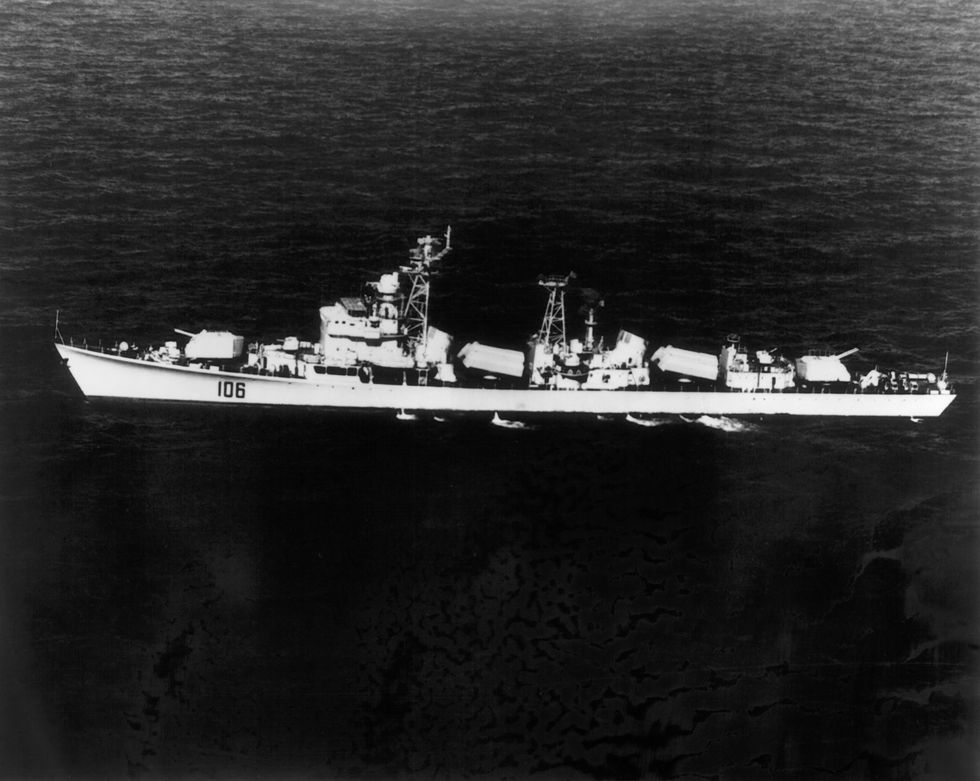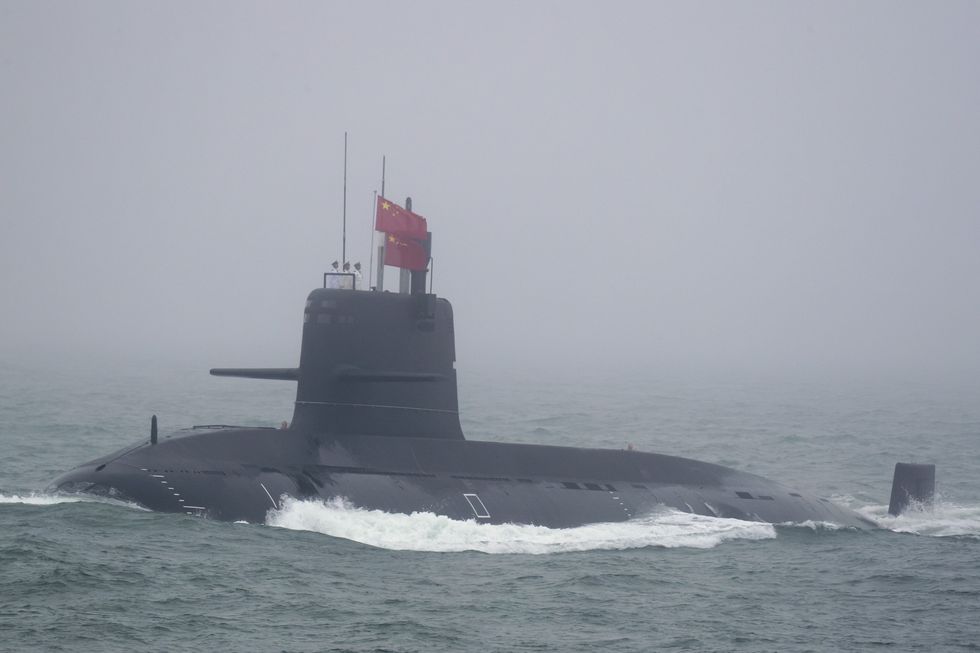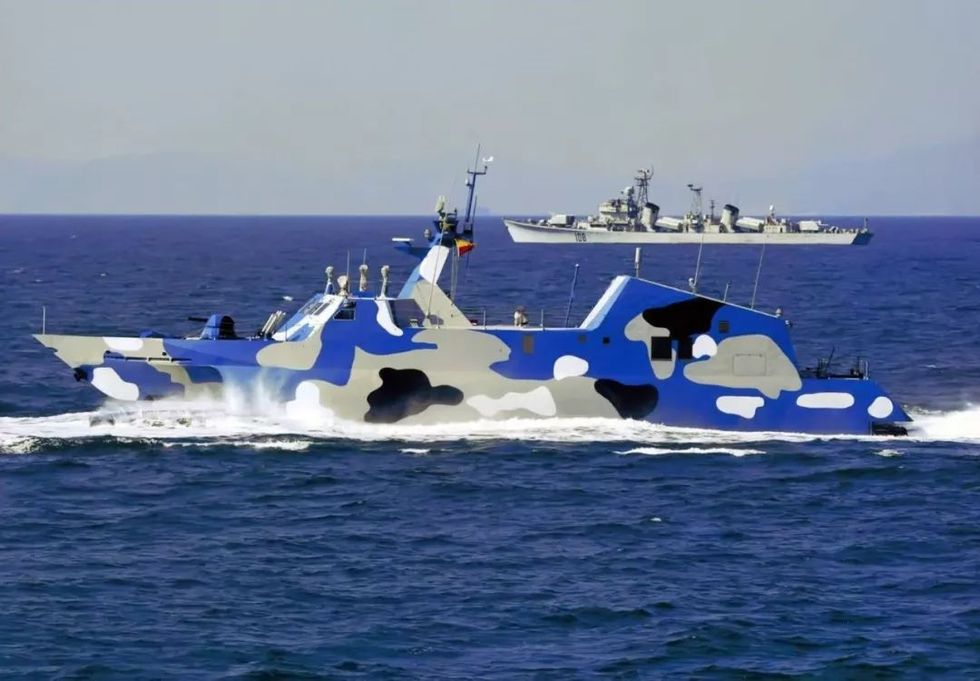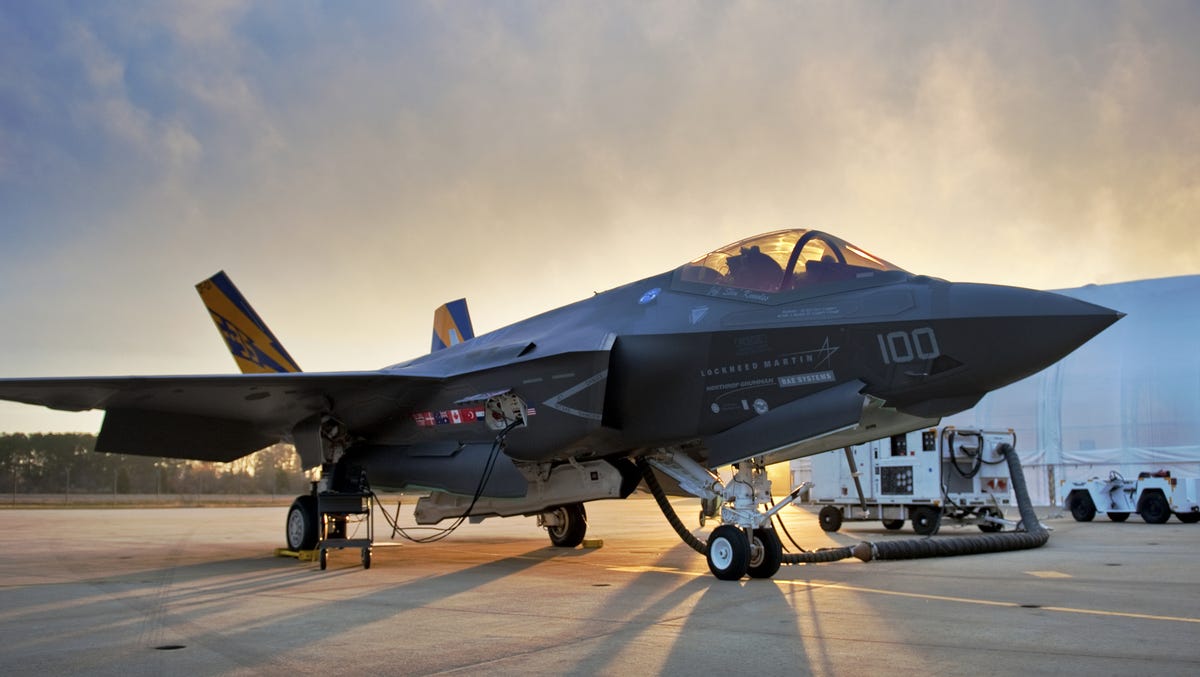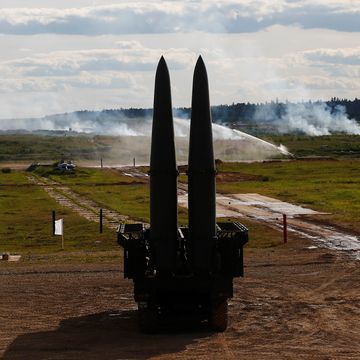- The Pentagon’s annual China Military Report went live this week.
- The report claims the People’s Liberation Army Navy is the largest of the world, but the U.S. Navy is still the largest by weight of ships.
- Still, China continues to crank out an impressive number of warships, and it may only be a matter of time before the PLAN outweighs even the USN.
A new report from the U.S. Department of Defense claims the Chinese Navy, known officially as the People’s Liberation Army Navy (PLAN), is the largest in the world. According to the Pentagon, the PLAN has 350 battle force ships, as opposed to the U.S. Navy's 293 ships. While the U.S. Navy is far larger by tonnage, that advantage could be erased given China’s frantic shipbuilding schedule.
🚢 You love badass ships. So do we. Let's nerd out over them together.
Over the last three decades, the Chinese military has enjoyed double-digit growth in defense spending. The rise of the Chinese economy has allowed the country to spend much more on its armed forces without spending a greater portion of the gross domestic product. In fact, the defense budget has grown by about sixfold in the last six decades, with an emphasis on modernizing combat forces and building out power projection capabilities—particularly the Chinese Navy.
In the late 1970s, China was a relatively poor country and relied on the concept of “People’s War” to fight wars. Ground forces, including the Chinese Army and guerrillas, would surround and destroy enemy forces in a war of attrition. The Chinese Navy was largely regulated to a coastal defense force that could rarely project power 100 miles from the Chinese coastline.
In 1979, the PLAN consisted of more than 140 missile boats, 53 corvettes, 12 frigates, 11 destroyers, 75 submarines, and 15 major amphibious ships. Even then, most of the ships were obsolete, fielding older missiles and sensors that made them no match for the U.S. Navy—or almost any other major navy, for that matter.
The Pentagon's 2020 Military and Security Developments on the People’s Republic of China says the PLAN is “numerically the largest navy in the world” with 350 battle force ships, or ships that are able to contribute to combat operations. This includes 86 missile patrol boats, 49 corvettes, 53 frigates, 32 destroyers, one cruiser, 52 nuclear and conventionally powered attack submarines, four nuclear-powered ballistic missile submarines, 58 major amphibious ships, and two aircraft carriers assigned to the Northern, Eastern, and Southern navies, with the other 100 ships assigned elsewhere.
The last four decades have made a tremendous difference for the PLAN. The fleet is larger and almost fully modernized. The Type 054A Jiangkai II frigate is more or less at the level of Western frigates, particularly European ships, while the new Type 055 Renhai cruiser could be a real match for the U.S. Navy’s aging Ticonderoga-class ships.
📚 Read Up: Our Favorite Military History Books
China launched its first aircraft carrier, Liaoning, in 2012, recently completed a second, and is currently building a third. Amphibious ships that can ferry troops across the Taiwan Strait are growing larger and more capable. Although China is still investing in smaller patrol boats and corvettes useful for coastal defense, it's bulking up on ships of destroyer size and higher that can challenge the U.S. and Japanese fleets in the western Pacific.
Despite all this, however, the Chinese fleet is still smaller than the U.S. Navy in one key metric: overall tonnage. The overall weight of all the ships in the Chinese Navy is about 1.8 million tons, though that number is slightly dated and might even be up to 2 million tons.
The U.S. Navy, on the other hand, weighs in at a whopping 4.6 million tons.
Several factors account for the disparity. China’s fleet still includes nearly 140 missile boats and corvettes for coastal defense, including the Type 022 Houbei-class missile boat and Type 056 Jiangdao class corvette. The U.S., surrounded by friendly neighbors and thousands of miles from any conceivable adversary, doesn’t even bother with coastal defense ships. U.S. Navy ships in general, from submarines to aircraft carriers, are also typically 10 to 20 percent larger than their Chinese counterparts.
But the U.S. Navy’s real edge lies in its big-deck aircraft carriers and amphibious assault ships. The Navy has 11 aircraft carriers of 100,000 tons or more, and nine Wasp and America-class amphibious transports (not including the USS Bonhomme Richard, gutted in July by a major fire.) China has two carriers of about 60,000 tons, and is only now building out its first amphibious transport, the Type 075. China’s entire low-end fleet—its force of 137 missile patrol boats and corvettes—doesn’t even add up to a single American aircraft carrier in tonnage.
Still, China has made impressive gains over the past four decades and continues to play catch-up with the U.S. Navy. The PLAN has fielded two aircraft carriers and will likely build a force of six to eight, which should add up to a considerable narrowing of the tonnage gap. The PLAN will almost certainly build more Type 075 amphibious ships, and there are reports of a new Type 076 assault carrier. China is building ships so fast that the Pentagon report can’t even keep up; the data in the new report is eight months old, but by late last month, China had launched an additional two new Type 052D destroyers and two Type 055 cruisers.
China may never catch up with the U.S. Navy; the country’s economy is expected to slow as demographics and socioeconomic reforms will slow defense spending. But China may not even need to keep pace: Unlike the U.S. Navy, China’s Navy isn't saddled with global commitments that require ships in Europe, the Middle East, Central and South America, and elsewhere.
China only needs to match America where it matters. And for now, that's the waters of the western Pacific Ocean.

Kyle Mizokami is a writer on defense and security issues and has been at Popular Mechanics since 2015. If it involves explosions or projectiles, he's generally in favor of it. Kyle’s articles have appeared at The Daily Beast, U.S. Naval Institute News, The Diplomat, Foreign Policy, Combat Aircraft Monthly, VICE News, and others. He lives in San Francisco.
